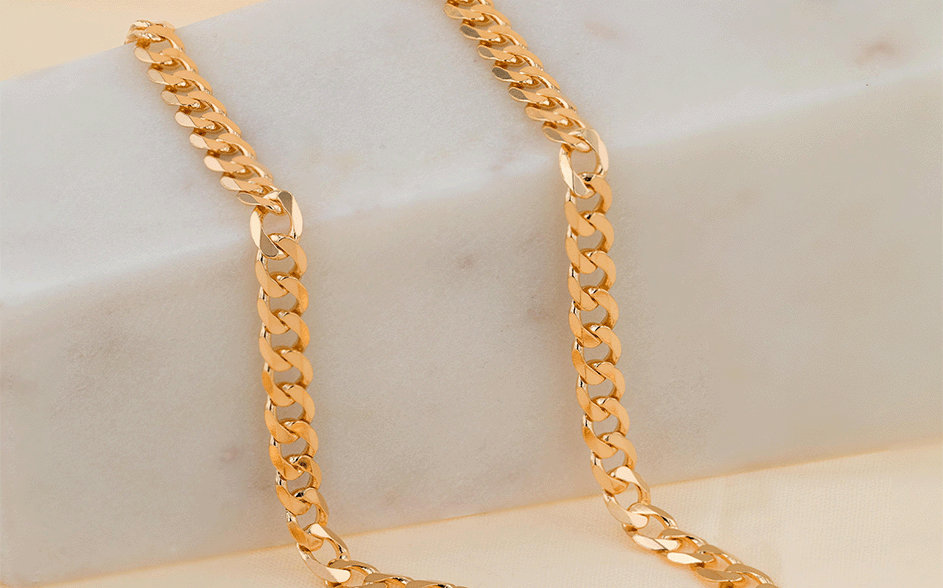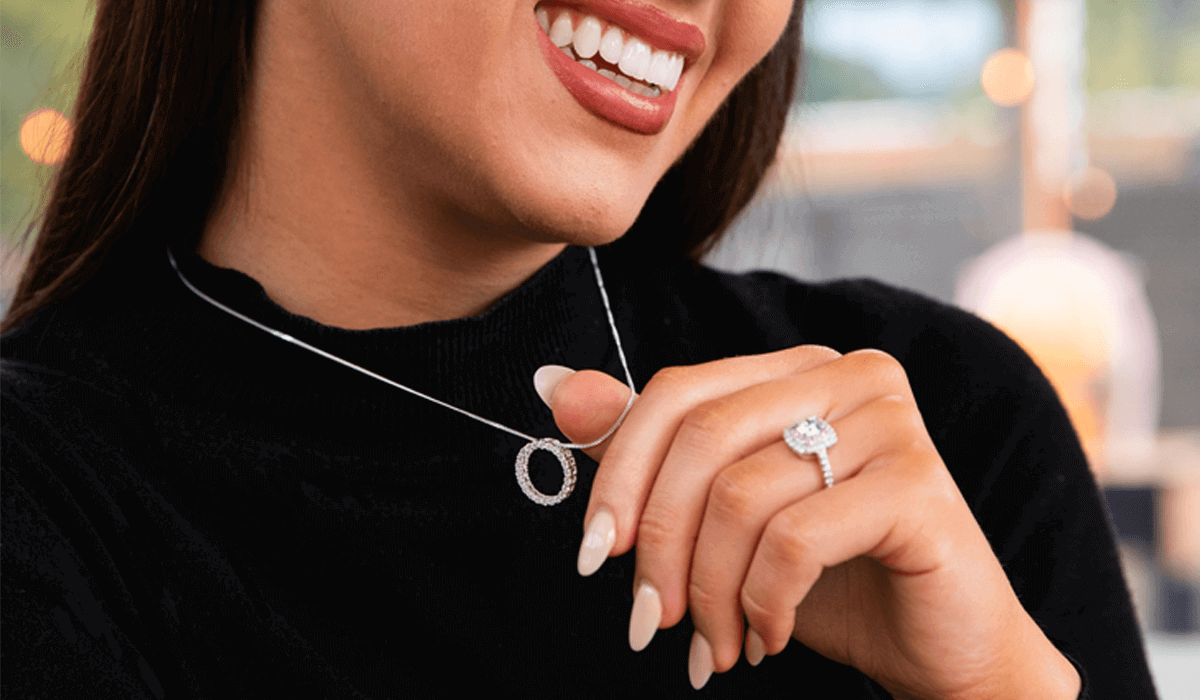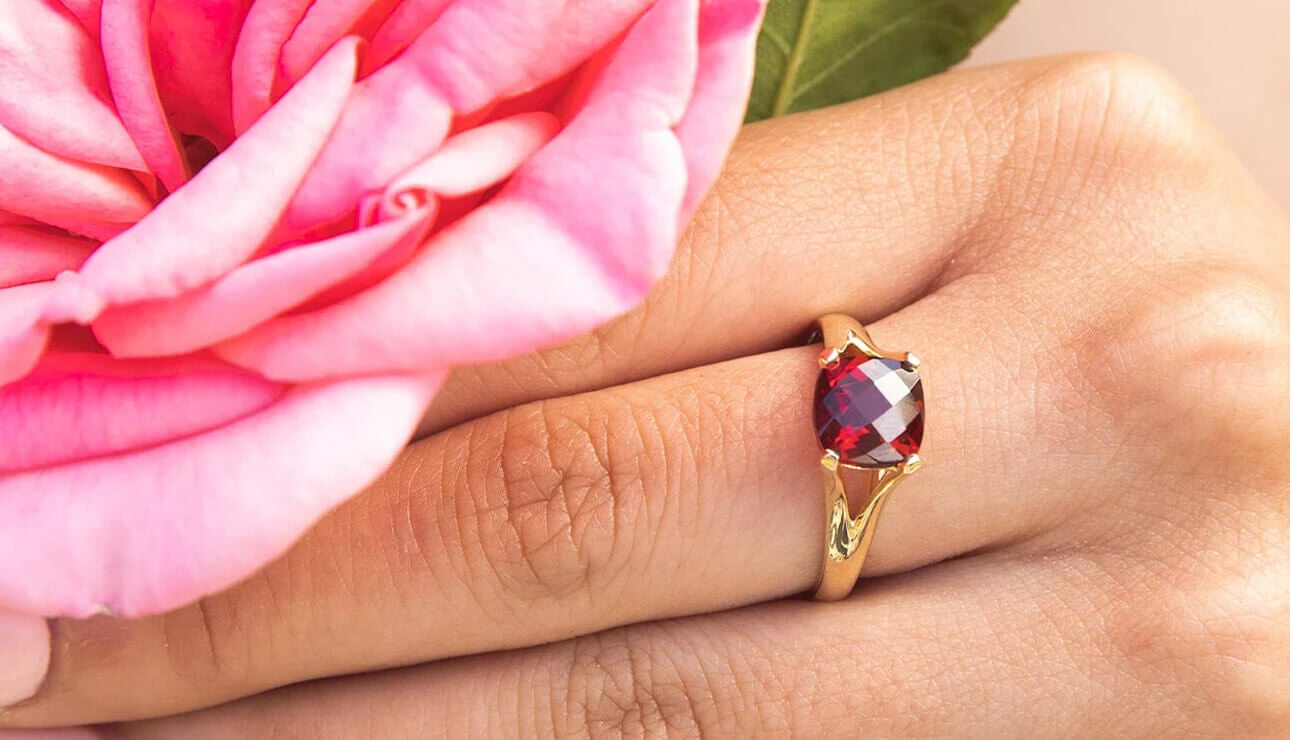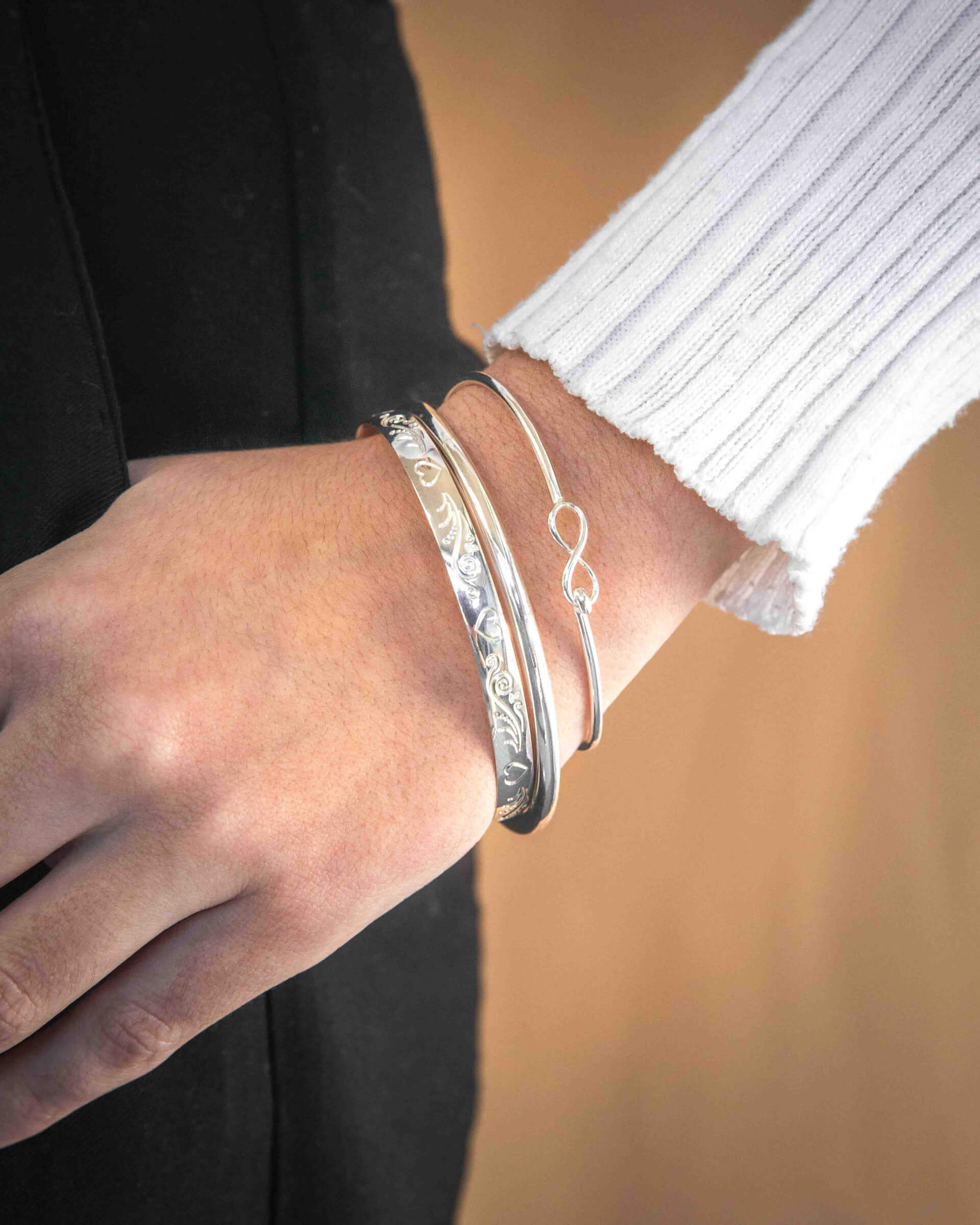Shopping for gold jewellery is like shopping for diamonds because all gold is different. And we're not just talking about the type of jewellery you are adding to your collection or the gold hue you have chosen. When you're on the hunt for those perfect staple gold hoop earrings, that essential gold chain for layering, or a bunch of gold bangles and pendants, you are going to need to figure out whether you are going to choose something with 9-carat gold, 18-carat gold or something within another carat rating.
The number of carats in your gold jewellery can affect its cost, its value as well as the piece's appearance and durability. These factors will ultimately help you determine what type of gold is right for you, your budget and your style. So, what is the difference between 9ct and 18ct gold? Read on to find out and get a comprehensive guide on the role that gold purity plays in the quality of your pieces and whether gold jewellery has the ability to tarnish.
Overview:
- What Is The Difference Between 9ct and 18ct Gold?
- How To Tell What Carat Your Gold Jewellery Is?
- What Is Silverfilled Gold & How Does It Differ To Solid & Plated Gold?
What Is The Difference Between 9ct and 18ct Gold?
A majority of Australia's gold jewellery comes in one of two gold purities, 9-carat and 18-carat. There are other types of gold purities out there including 14-carat, 22-carat and 24-carat, however, these are less common. The difference between all these types of gold including 9-carat and 18-carat all comes down to gold purity. It is a common misconception that yellow gold jewellery is made from nothing but solid gold, however, this is just not the case. While it is relatively durable, solid gold is too soft and malleable to be made into jewellery that is designed to be worn every day. As a result, gold jewellery often contains other metals such as copper, brass, nickel and zinc that are mixed in with solid gold to make it heavier and sturdier.
Much like how carats are used to determine the weight and size of the stones that are set into diamond jewellery, carats can also be used the determine the percentage of solid gold in your jewellery and accessories. So, what is the difference between 9-carat gold and 18-carat gold?
The main difference between these two gold purities is that 9-carat gold is much cheaper than 18-carat gold. This is because 9-carat gold has a lower percentage of gold in it. The industry standard for an item to be considered 9-carat is that it must contain around 37.5% of pure gold, meaning that the remaining 62.5% is made up of other metals such as brass, copper, nickel and zinc. Given it only contains 37.5% pure gold, 9-carat pieces are slightly heavier than 18-carat pieces and often have a slightly paler gold tone. And while 9-carat gold is relatively tough, it is not as durable as other gold purities. As a result, 9-carat gold is a popular choice for pieces meant for casual wear such as gold earrings, gold pendants, gold necklaces and bracelets.
18-carat gold, on the other hand, contains over 75% of pure gold and is therefore much more durable. 18-carat gold also boasts a richer and more prominently yellow hue. While 9-carat gold is certainly nothing to turn your nose up at, it is likely that people will preference 18-carat gold over it due to the durability and longevity it provides is favoured by those shopping for more precious items including engagement rings and wedding rings, as well as staple pieces such as diamond jewellery, chains, personalised jewellery and tennis bracelets. While it might make you spend more, 18-carat gold is the most popular choice when picking out jewellery, even more so than 24-carat gold which contains around 99.5% of pure gold and is therefore considered solid gold. Shoppers will often avoid 24-carat gold not only because it is extremely expensive, but also because the amount of gold can make the piece too soft and because it may struggle to withstand the weight of heavy adornments such as diamonds and gemstones.
How To Tell What Carat Your Gold Jewellery Is?
Unlike diamonds, you cannot determine the purity of a gold piece just by weighing or measuring it. Gold just isn't that clear-cut. Sure, the lower the percentage of gold can alter a piece's tone and colour, but that doesn't necessarily make it any easier to determine. There is only one full-proof way to tell what carat your gold jewellery is and that is by looking at the back of your pieces with magnifying equipment and taking note of the hallmark stamp on the back.
Whether it is gold or silver jewellery, a majority of pieces that are manufactured by a licensed jeweller will feature a small hallmark engraved on the inside of the piece. In Australia, these hallmarks are mandated by Consumer Law and are used to indicate not only whether an item is produced from genuine materials but also in the case of gold, what its carat rating may be. While some jewellery items such as rings and earrings will have a small stamp that reads: '18K', '9K', '14K' and so forth, others will be engraved with a special number depending on their carat rating. If the item is 9-carat, it will be stamped with the number 375 to indicate that it contains 37.5% pure gold. For items that are 18-carat gold, they would be adorned with the number 750.
What Is Silverfilled Gold & How Does It Differ To Solid & Plated Gold?
A carat rating isn't the only way one can differentiate gold, as this can also be done by type. Silver-filled gold is proving to be tremendously popular among gold jewellery fans, particularly, those looking to save little money on their everyday jewellery items such as gold bracelets, gold chains and gold pendants. Unlike solid gold which is made up of 24-carat gold (99.9% pure gold) or gold-filled which generally consists of 22-carat, 18-carat, 14-carat and 9-carat gold pieces that are often filled with other metals including copper, brass, zinc and nickel, silver-filled gold is gold that is filled 925 silver. 925 silver or sterling silver as it is commonly known, is a piece that contains 92.5% pure silver with the remaining 7.5% being made up of other alloys. In the case of silver-filled gold a.k.a gold vermeil, the small percentage of other metal alloys present is exclusively solid gold.
Silver-filled gold is produced by bonding a thin layer of gold to a piece of sterling silver in a process known as electroplating. This process differs slightly from gold-plated silver jewellery because even though they both involve electroplating, with gold-plated jewellery the gold isn't actually bonded onto the base metal which is usually copper, nickel or brass. As a result, gold-plated jewellery is prone to corrosion and tarnishing, whereas silver-filled gold is not and is, therefore, a great substitute for those looking for durable fashion jewellery that won't cost the wearer an arm or a leg. Unlike gold-filled jewellery which can sometimes contain nickel-a common allergen, silver-filled gold is hypoallergenic and therefore won't cause a reaction. If you are someone who suffers from allergies or sensitive ears, you may want to opt for a pair of silver-filled earrings-especially if you are after a pair you are eager to wear every day such as hoop earrings or stud earrings.
$199.00
Elevate your wrist game with our exquisite Sterling Silver Gold-Plated Multicolor Beads Bracelet, adjustable from 16 to 19 cm. This stunning piece combines the timeless allure of sterling silver with the vibrant charm of multicoloured beads, creating a harmonious blend… read moreSterling Silver Gold Plated Multicolour Beads 16+3cm Bracelet
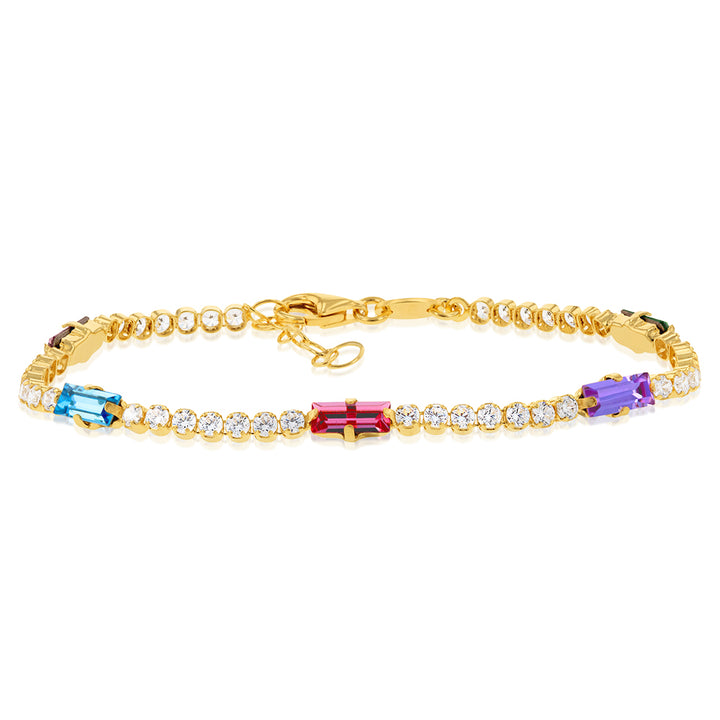





.png)

